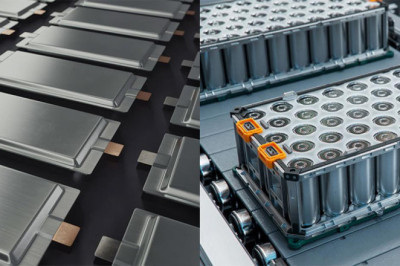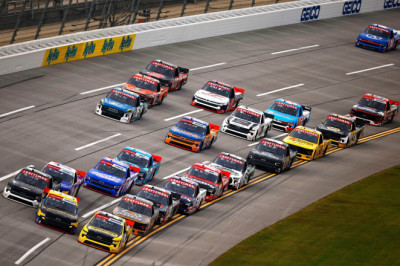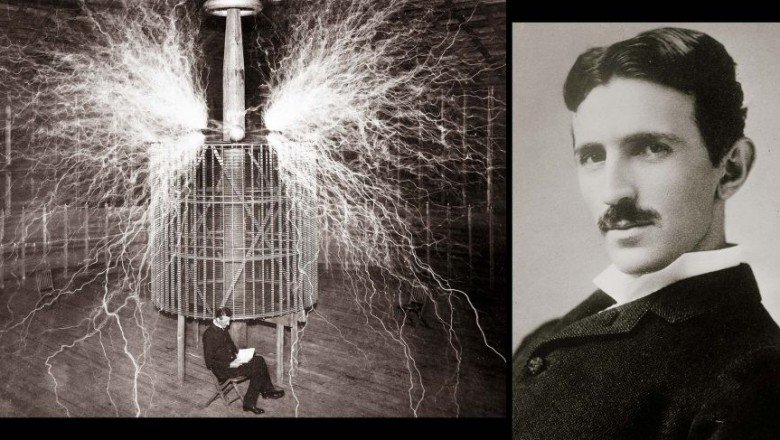
In the early 1900s, Nikola Tesla, a Serbian immigrant, played a pivotal role in shaping the industries that continue to impact our society today. Settling in New York City, Tesla emerged as a brilliant inventor during a time of immense technological possibilities and scientific advancements. His innovative ideas and groundbreaking work propelled him to the forefront of a rapidly evolving world of technology.
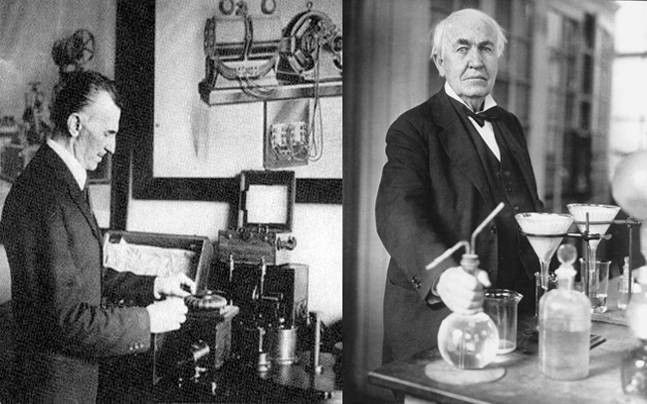
(Nikola Tesla on the left and Thomas Edison on the right, lifelong rival inventors.)
Nikola Tesla's collaboration with George Westinghouse on Alternating Currents (AC) revolutionized the field of electrical power. Their advancements in AC technology far surpassed the developments made in Direct Current (DC) by Thomas Edison and his General Electric Company. Tesla's breakthrough came to prominence after securing the contract to electrify and illuminate the lighting system at the World's Columbian Exposition in Chicago in 1893. The success of Tesla's AC system led to its widespread adoption as the standard for electric utilities, not just in the United States but also worldwide.
As electric lighting gained popularity, fossil fuel magnate John D. Rockefeller perceived a threat to his oil-based empire. He recognized the superior performance of electric lighting compared to traditional kerosene lamps. To safeguard his interests, Rockefeller decided to support Henry Ford's motor car company, based in Detroit. Ford's organization played a significant role in establishing the dominance of gasoline-powered internal combustion engines for ground transportation. Rockefeller's backing of Ford stemmed from his concerns that Tesla's potential development of affordable electric cars would jeopardize the scale and profitability of the fossil fuel industry.
Thus, the rise of petrol and diesel cars in the early 1900s can be attributed to the rapid expansion of gasoline-powered vehicles, exemplified by Ford's Model T. Rockefeller's investment in Ford and his focus on easily monetizable, fossil fuel-based transportation influenced the trajectory of the automotive industry and led to the prevalence of gasoline-powered vehicles we see today.
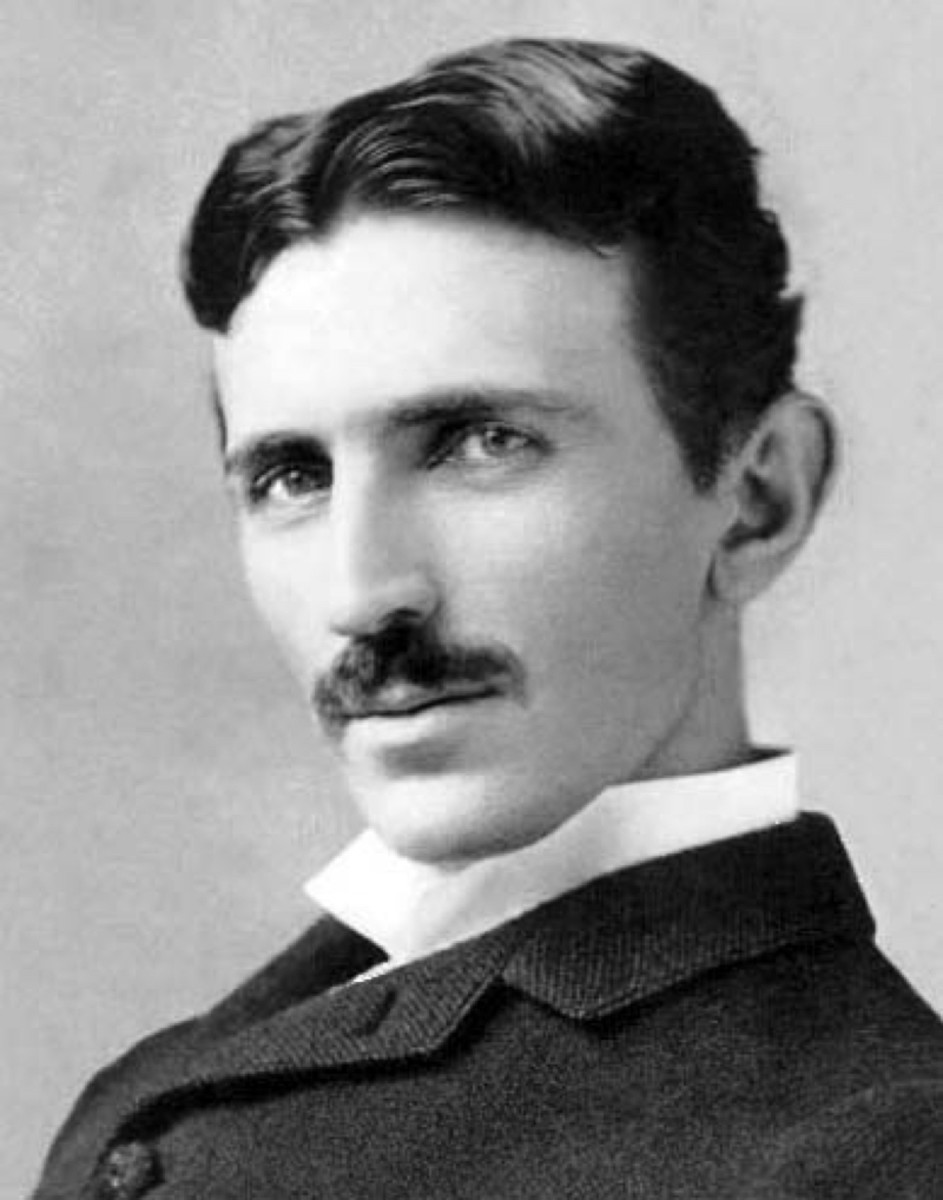
Starting in 1894, Tesla and Westinghouse embarked on an ambitious endeavor, constructing power stations that harnessed the energy of the falling water at Niagara Falls. Through their collaboration, they established a robust system for generating, transporting, and utilizing vast quantities of alternating current (AC) electricity. This marked a significant milestone in Tesla's career, as he was entering a phase of unparalleled success and productivity, where he applied groundbreaking scientific advancements, including some of his own discoveries, to revolutionize various industries.
Tesla's captivating presentations to the public became legendary, as he introduced numerous groundbreaking theories that pushed the boundaries of scientific understanding. One of his remarkable achievements was the demonstration of wireless systems for electric lighting. Through his pioneering work, Tesla showcased the potential of transmitting electricity without the need for cumbersome wires, a concept that seemed like magic to the audiences of his time.
Tesla's wireless lighting systems were a testament to his inventive genius and his ability to envision a future where electricity could be transmitted effortlessly through the air. These demonstrations not only showcased the practical applications of his theories but also captivated the imagination of the public, sparking new possibilities for the widespread adoption of electric lighting and the advancement of wireless technology.
Tesla's presentations not only served as a platform to unveil his visionary ideas but also as a means to inspire and ignite the curiosity of fellow inventors, scientists, and the general public. His contributions to the development of wireless systems and his relentless pursuit of scientific breakthroughs laid the foundation for the technological advancements we enjoy today. Tesla's work continues to be celebrated and revered, as he remains an iconic figure whose ideas continue to shape the world of science and technology.
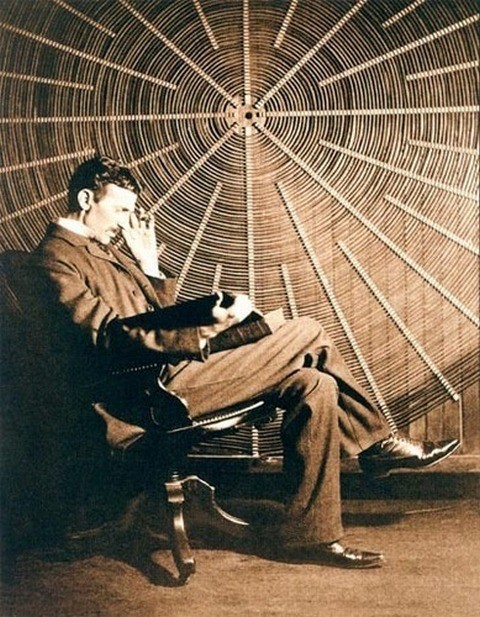
During a certain period, numerous prominent financiers engaged in a fierce competition to invest in Tesla's groundbreaking projects. Eventually, the renowned American banker, J.P. Morgan, emerged as Tesla's exclusive backer, marking a significant turning point in their relationship. It was during this time that Tesla delved into experimental ventures involving the earth itself as a conductor of electrical currents, rather than relying on conventional wires.
Tesla embarked on his revolutionary endeavors first in Colorado Springs and later at Wardenclyffe, his installation on Long Island, New York. His primary focus was to explore methods of drawing electricity from the earth's outer atmosphere, known as the ionosphere. It was during these pursuits that Tesla made a significant breakthrough by combining his research on tapping into natural electrical systems with wireless communication technologies capable of transmitting text, images, and sound. In many ways, Tesla's visionary work laid the foundation for concepts that are now ubiquitous, such as Wi-Fi.
However, the tide turned when J.P. Morgan allegedly grasped the full extent of the revolutionary implications behind Tesla's innovations. As an intermediary between the European and American interests of the Rothschild banking family, Morgan began to view Tesla's ideas as problematic. The financier expressed concern over the lack of clarity regarding how electricity could be metered and sold, thereby hindering the potential for profit-making.
Morgan's realization that Tesla's motivations transcended monetary gain marked a turning point in their relationship. Tesla's driving force was not wealth accumulation but rather a desire to gift humanity with transformative technologies and scientific advancements that would liberate people from darkness and oppressive systems. Unfortunately, Morgan and the class of people he represented did not share Tesla's altruistic vision of utilizing research and development to enhance human existence in harmony with the natural world.
The betrayal by Morgan in 1904 proved devastating for Tesla. Suffering a nervous breakdown, Tesla witnessed the destruction of his famous tower and laboratory at Wardenclyffe. Adding insult to injury, Morgan launched a campaign to discredit Tesla and ensure that securing financial backing from other investors would become nearly impossible for the brilliant inventor. It was a challenging and tumultuous time for Tesla, as he grappled with the aftermath of these events and worked tirelessly to regain momentum in his pursuits.
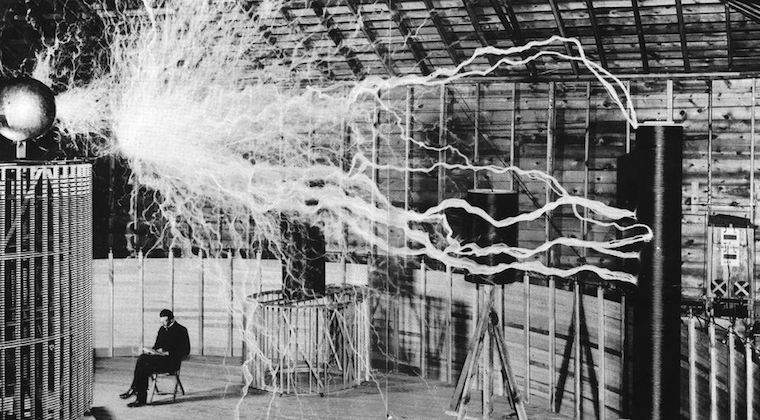
(Nikola Tesla (1856-1943) in his laboratory in Colorado Springs in 1899, with the book "Theoria Philosophiae Naturalis" by Ruđer Bošković, a famous Croatian scientist from the 18th century.)
The later years of Nikola Tesla's life remain enigmatic and subject to various interpretations. Some theories suggest that Tesla made a full recovery from his breakdown and continued his work in secret, collaborating with a new group of undisclosed partners. These theories propose that Tesla's secret inventions may have included groundbreaking devices for teleportation and communication with extraterrestrial life forms. The exact details of this period, however, remain elusive.
Upon Tesla's death in 1943, penniless in New York, the FBI intervened and seized his papers and prototypes, adding to the air of intrigue surrounding his work. Many speculate that the US military, even to this day, continues to exploit Tesla's inventions and theories in manners that contradict his philosophy as one of the most gifted and enlightened inventors in history.
A notable example often cited is the High-Frequency Active Auroral Research Program (HAARP) located in Alaska. While Tesla envisioned tapping into atmospheric electricity to provide free energy for humanity, HAARP is believed by some to have deviated from this vision. Instead, critics argue that HAARP may have become a platform for advancing the US Armed Forces' objective of achieving "full-spectrum dominance." This alleged exploitation of Tesla's ideas for military purposes represents a departure from his intended goal of benefiting humanity with his remarkable technological advancements.
Though surrounded by speculation and conspiracy theories, the true extent of Tesla's influence and the application of his ideas within military programs such as HAARP remains a subject of debate and investigation.
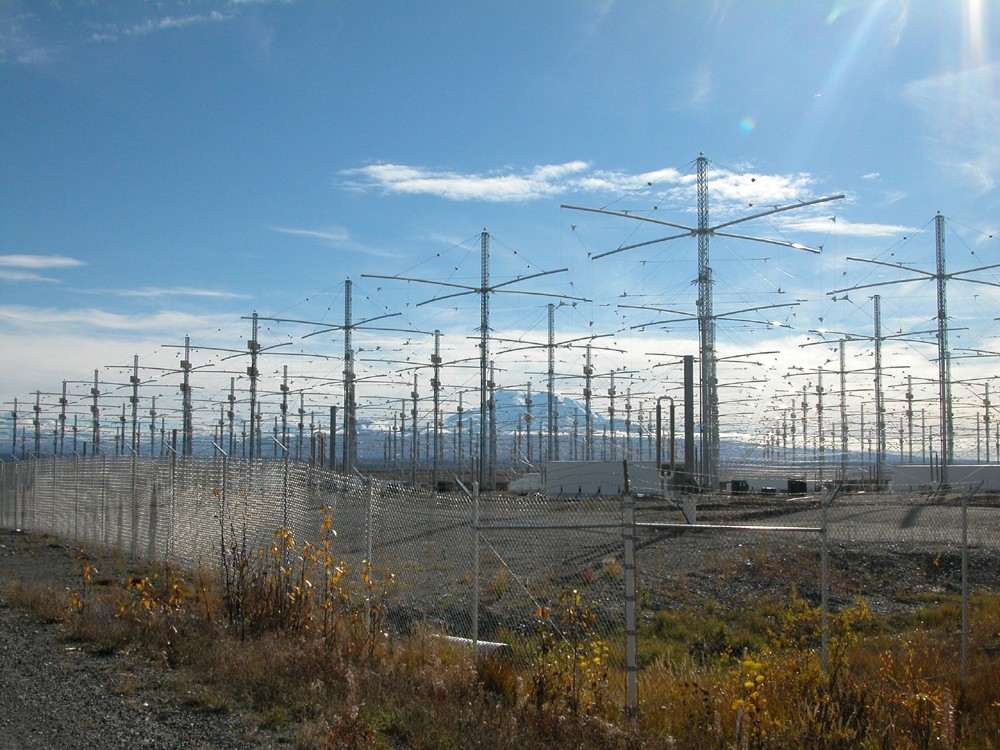
The High Frequency Active Auroral Research Program (HAARP) was launched as a collaborative ionospheric research initiative, receiving funding from the U.S. Air Force, the U.S. Navy, the University of Alaska Fairbanks, and the Defense Advanced Research Projects Agency (DARPA). BAE Advanced Technologies (BAEAT) was responsible for its design and construction. Initially, HAARP's primary objective was to analyze the ionosphere and explore the potential for developing ionospheric enhancement technologies to advance radio communications and surveillance capabilities. Serving as a university-owned facility, HAARP operates as a high-power, high-frequency transmitter, focusing on in-depth studies of the ionosphere's characteristics and behavior.
There are claims that HAARP's researchers are involved in the development of systems for electromagnetic warfare, including alleged devices that could potentially manipulate weather patterns and trigger earthquakes. These activities, if true, contradict the principles Tesla upheld, as they interfere with the natural harmony and functioning of the environment.
In retrospect, it becomes evident that humanity took a misguided path in the early 1900s when establishing the foundation for energy generation, transformation, and utilization. While Tesla's early innovations, particularly in the realm of alternating current (AC), were adopted as the basis for global electrification systems, his more advanced theories and inventions were sidelined in favor of less sophisticated yet more financially lucrative methods to drive commercial and automotive engines. Correcting this historical divergence is crucial.
As a society, we still possess the collective power to shift away from the vision of profit-driven energy that has historically been promoted by influential figures such as J.P. Morgan, the Rothschild family, John D. Rockefeller, Thomas Edison, and Henry Ford. It is within our reach to reverse the course that was imposed upon humanity in the early twentieth century and explore alternative, sustainable, and equitable energy solutions that align with Tesla's vision of benefiting humanity and harmonizing with nature.
10 Fascinating Facts About Nikola Tesla: A Visionary Inventor and Pioneer of Electricity
-
Nikola Tesla was born on July 10, 1856, in Smiljan, Croatia (then part of the Austrian Empire), and he later became a naturalized American citizen.
-
Tesla was known for his eccentricities and remarkable intelligence. He had a photographic memory and could visualize inventions in his mind before constructing them.
-
Tesla was a pioneer in the field of electrical engineering and made significant contributions to the development of alternating current (AC) power systems. His AC system revolutionized the transmission and distribution of electricity, making it more efficient and practical for widespread use.
-
Tesla and Thomas Edison were rivals in the "War of Currents," a battle between AC and direct current (DC) power systems. Edison championed DC, while Tesla advocated for AC. Ultimately, AC prevailed due to its ability to transmit electricity over long distances more efficiently.
-
Tesla held more than 300 patents for his inventions, including the Tesla coil, an electrical resonant transformer circuit used in numerous applications, including wireless transmission of electricity.
-
One of Tesla's most ambitious projects was the Wardenclyffe Tower, located in Shoreham, New York. The tower was intended to transmit wireless electricity and provide free energy to the world. However, due to funding issues, the project was abandoned and the tower was demolished.
-
Tesla had a fascination with wireless communication and envisioned a global wireless communication system. Although his vision of a worldwide wireless network was never fully realized, his ideas and inventions laid the foundation for modern wireless technologies.
-
Tesla was intrigued by the concept of wireless energy transmission and conducted experiments to transmit electricity wirelessly. His experiments involved the use of Tesla coils and resonant inductive coupling.
-
Tesla's inventions and contributions extended beyond electricity and included advancements in robotics, X-ray technology, remote control devices, and even early concepts of radar technology.
-
Despite his remarkable achievements, Tesla struggled financially and died in relative obscurity on January 7, 1943, in New York City. However, his contributions to science and technology have been recognized and celebrated posthumously, cementing his legacy as one of history's greatest inventors.










